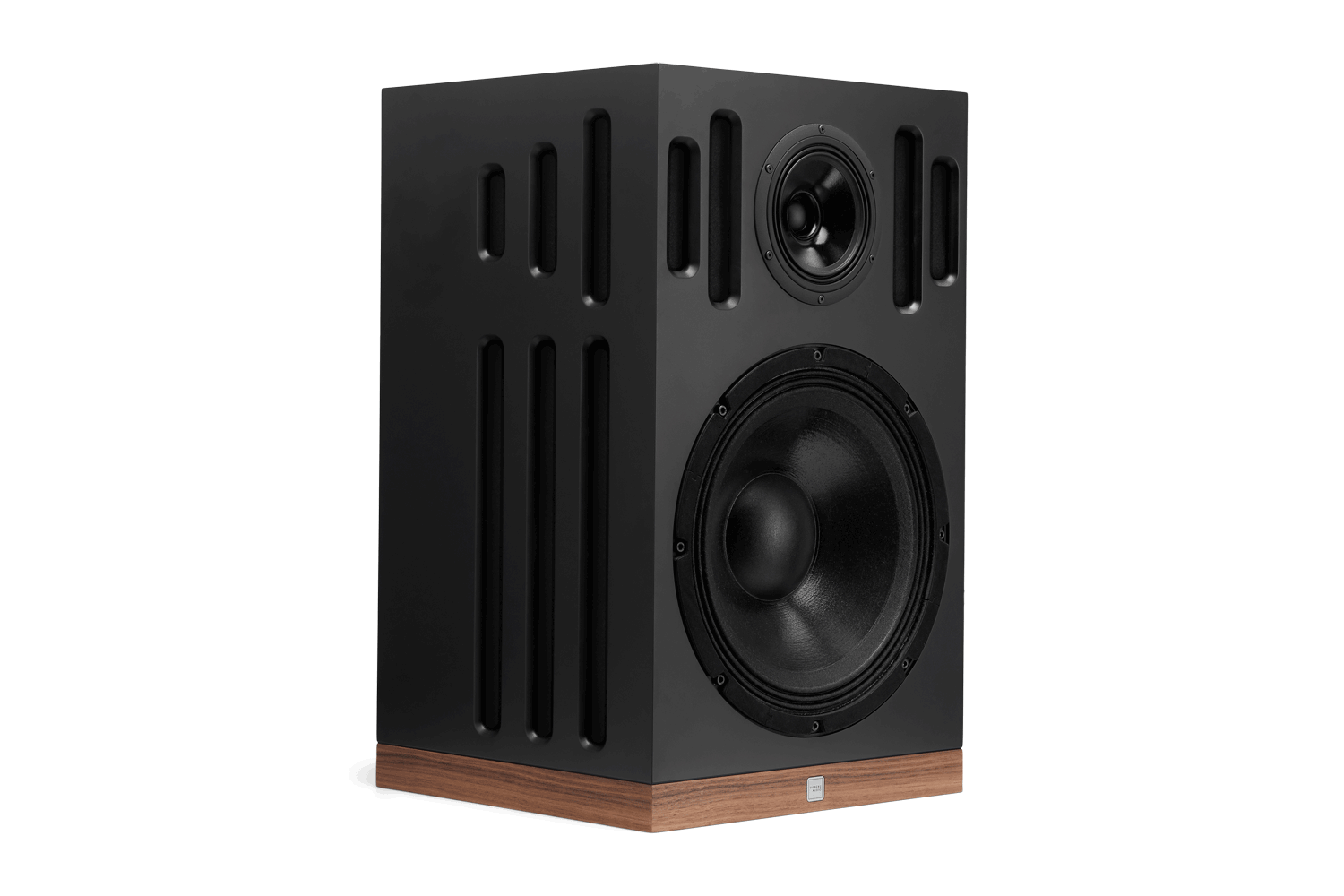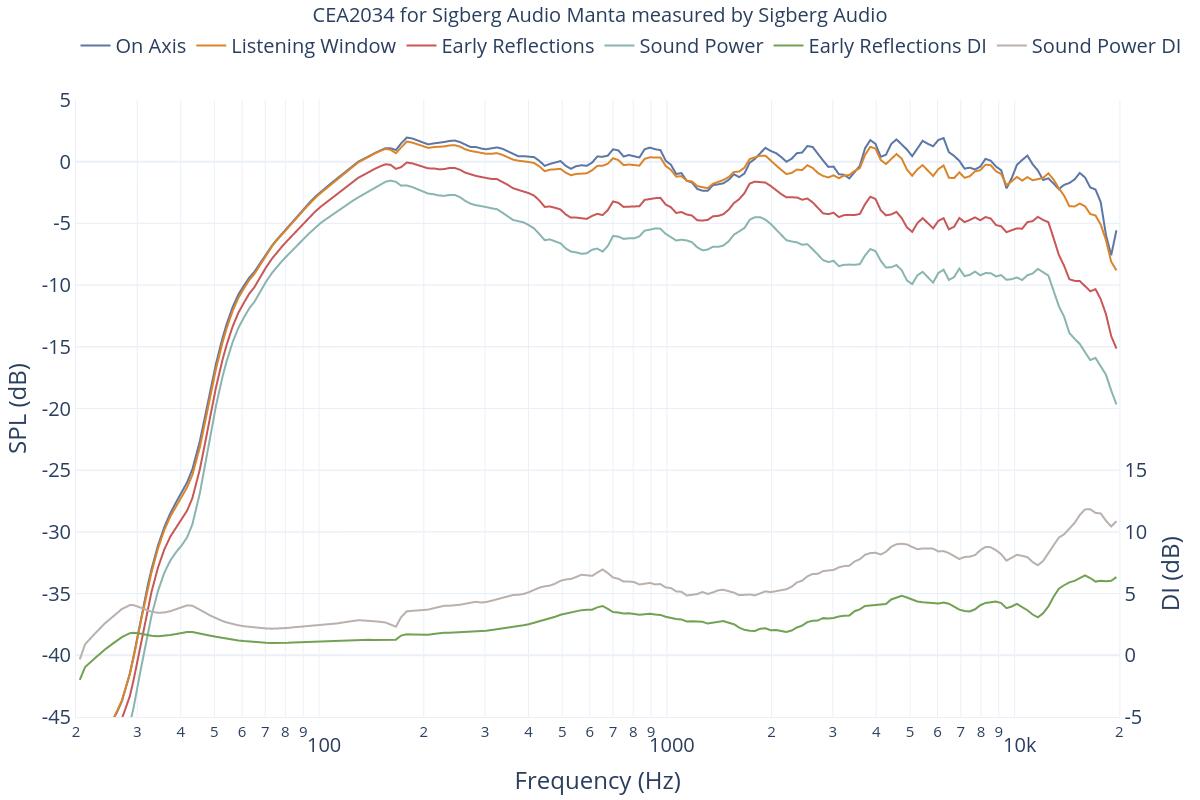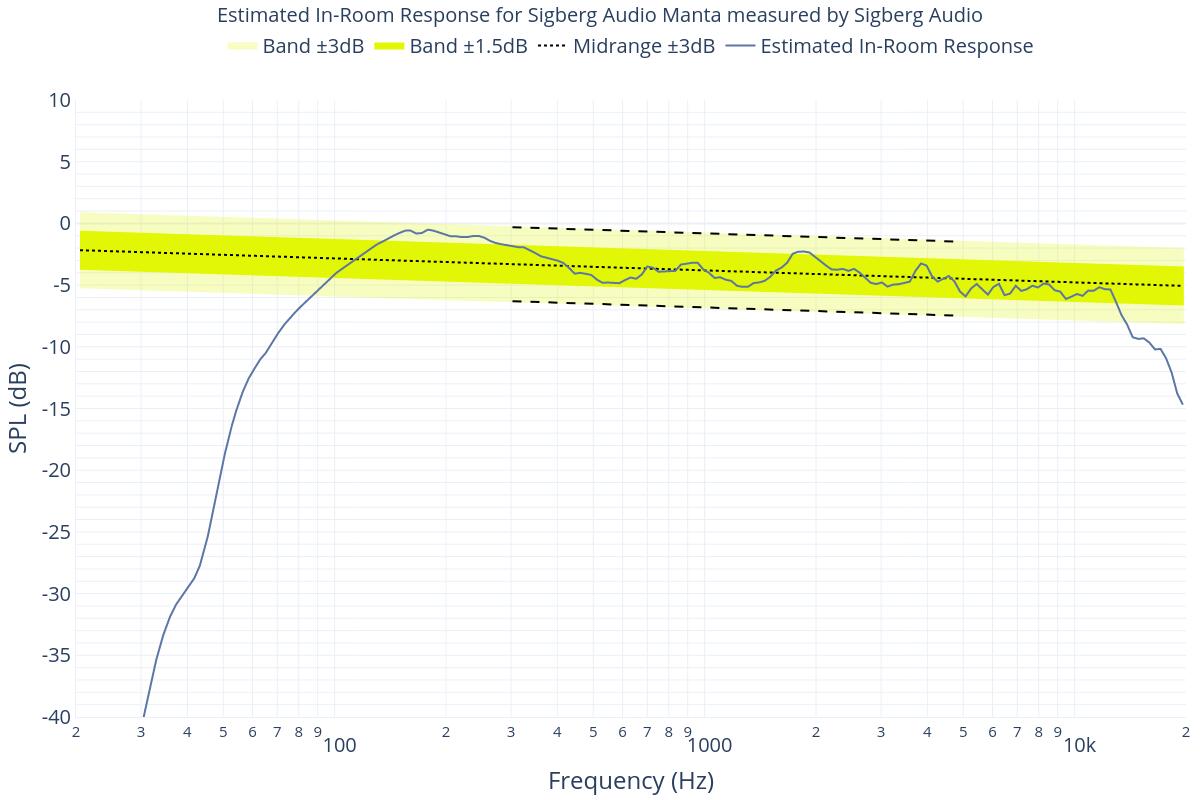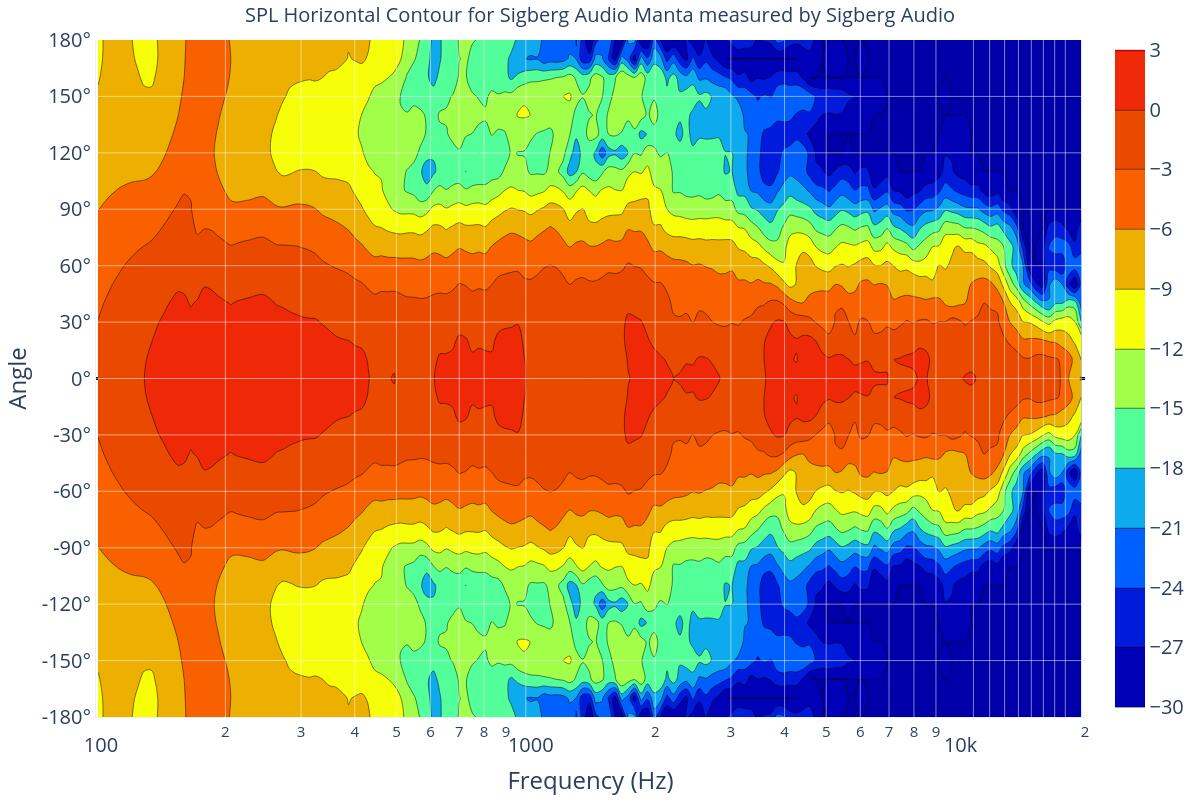
Disclaimer#1: Klippel measurements from us (the manufacturer), not independent measurements.
Disclaimer#2: Cleared with moderators that it would be okay to post this thread for specific discussion around the measurements and technical aspect of the speakers. For discussions related more specifically to the company/products/purchasing/how they look/basically anything not related to the measurements or technical design, please post in the Manta development thread in the Desperate dealers forum.
Many have asked if we would send our speakers to Amir or Erin for measurements. We've not done that, but we've finally taken a full set of measurements in the anechoic chamber of Seas, documented with their Klippel software. This has then been published to www.spinorama.org (Big thanks to @pierre for his great work on this site).
Full measurements available here: https://www.spinorama.org/speakers/Sigberg Audio Manta/Sigberg Audio/index_vendor-v1-20231028.html
For those focused on the preference score, please note that this score doesn't really make sense for these speakers, since the score rely heavily on bass / bass extension, and these speakers are explicitly designed to be paired with subwoofers. For an indication one may look at the "w/sub" preference score (6.8), but the base score is not valid. What is more interesting is the detailed graphs.
These are 3-way active speakers with dual, passive cardioid systems. The lower chamber and driver is operating from ~80-600hz, while the upper chamber is operating from 600hz and up. It is part of a 4-way speaker system where the bass below 100hz is handled by one or preferrably two subwoofers. The integration with our subwoofers is seamless both with regards to frequency response and phase. Note that the measurements are of the speakers only, which is why the roll-off are so early in the low-end.
They are designed for little to no toe-in, so actual listening angle is 10-15 degrees (not on-axis).
A couple of graphs (rest available on spinorama.org):



Full measurements available here: https://www.spinorama.org/speakers/Sigberg Audio Manta/Sigberg Audio/index_vendor-v1-20231028.html
I hope some interesting discussions can come out of these measurements, and in the same way as I've been as open and transparent as possible in our development threads, I will try to answer any questions connected to the measurements and technical/functional design to the best of my ability.
I predict some interesting discussion around picture perfect measurements vs perceived sound quality. An interesting observation is that with regards to linearity and preference score, the Mantas measures "worse" than our own SBS.1 speakers at half the price.
We also have some compromises between on-axis and off-axis that probably makes the on-axis seem a bit untidy to some.
The directivity is of course also an interesting aspect.
A similar thread for the SBS.1 speaker is available here.
Last edited:



